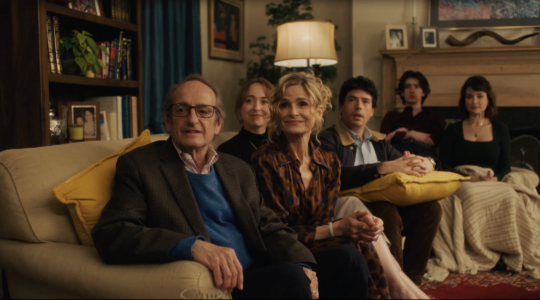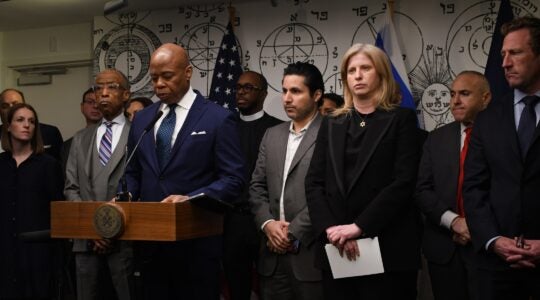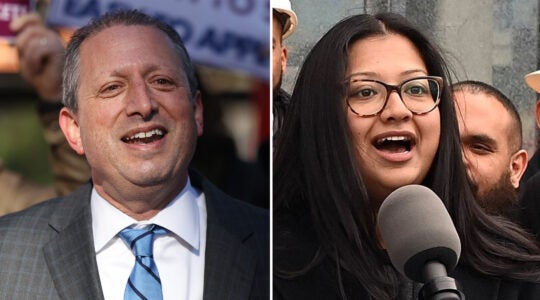The truest essence of reality is not necessarily that which meets the eye; indeed, oftentimes things and people are not what they appear to be. Even our most profound statement of faith, “Shema Yisrael” [Deuteronomy 6:4], is recited while covering one’s eyes so that we not be distracted by the illusory nature of what we see around us. Indeed, Rashi’s explanation of this verse, that we live in an incomplete and imperfect world in which God is not yet universally accepted, reinforces this point.
The world of God is the world of the inner dimension, the soul rather than the face of the human being, the inner reality rather than the mask for the outside world. In fact, the entire High Holy Day period, culminating with Simchat Torah, is dedicated to the inner self and to the essential soul of things. The shofar resonates with the inner cry of the human being; the liturgical poems remind us that God “searches the inner feelings of every human being.”
It may be said that the Jewish calendar establishes two celebrations for two aspects of the Torah. Shavuot marks the Revelation at Sinai. This was an external Torah, given amidst an “external extravaganza” of thunder, fire and sounds which were to be seen by the eye [Exodus 20:15].
*
Candlelighting, Readings:
Shabbat Candles: 6 p.m.
Torah: Genesis 1:1-6:8
Haftarah: Isaiah 42:5-43:9
Havdalah: 6:59 p.m.
*
In contrast, when Moses received the second set of tablets (on Yom Kippur) he did so within Divine silence, in the lonely splendor of intimacy with the Almighty. The Sages teach that only the second tablets contained the Oral Law [Midrash Shemot Rabba 46:1], which is actually the innermost dimension of Torah that can only be heard and extracted by those privy to the Torah’s secrets.
It is not by accident that the first tablets were broken, whereas the second are eternal and indestructible. It is not coincidental that 40 days after the first Revelation, the Israelites worshipped the Golden Calf, whereas the second Torah remains our eternal symbol of Divine love and forgiveness.
These two Torot are expressed in the Ktiv and Kri of the Torah as we experience it. The Ktiv literally means the “writing,” the black letters as they appear in the Torah scroll. The Kri is the way our tradition mandates that we read those letters, sometimes in a different way than we would expect. One might say that the Ktiv is the external Torah and the Kri its internal counterpart. On Simchat Torah we celebrate the inner Torah, the Oral Torah, the “Kri.”
On this closing day of the High Holiday period, right before we read Bereshit and begin the cycle anew, we read of the death of Moses. Moses’ life also has its own Ktiv and Kri, an external form and an internal essence.
On the one hand, we might conclude that Moses was a tragic personality: he began his life as a veritable prince in Egypt, but concluded it wandering in the desert, without even a solid roof over his head. His goal had been to take the Israelites into the Promised Land. He never does. After a series of rebellions and 42 temporary destinations, Moses departs from his people and the physical world without even a stone monument to mark his memory.
The truth, however, resides in the Kri of Moses’ life, the internal essence that follows us and that we follow to this day. It was Moses who spoke to God face-to-face, as it were, and led the transformation of a slave nation into one that had a relationship with the Divine. Even if Moses’ words were not always heard by his own generation, his message reverberates throughout the Jewish generations.
On Simchat Torah we celebrate the Torah, and begin reading Bereshit all over again, even as we read of Moses’ death because for us Moses never died. His grave is unmarked because through the words of the Torah that he communicated to us, he lives on. Moses in essence resides in his inner message. The Torah by which we live and from which we study is his eternal legacy. It is this Torah over which we rejoice on Simchat Torah, starting again from the beginning.
Rabbi Shlomo Riskin, chief rabbi of Efrat, is chancellor of Ohr Torah Stone.
The New York Jewish Week brings you the stories behind the headlines, keeping you connected to Jewish life in New York. Help sustain the reporting you trust by donating today.




